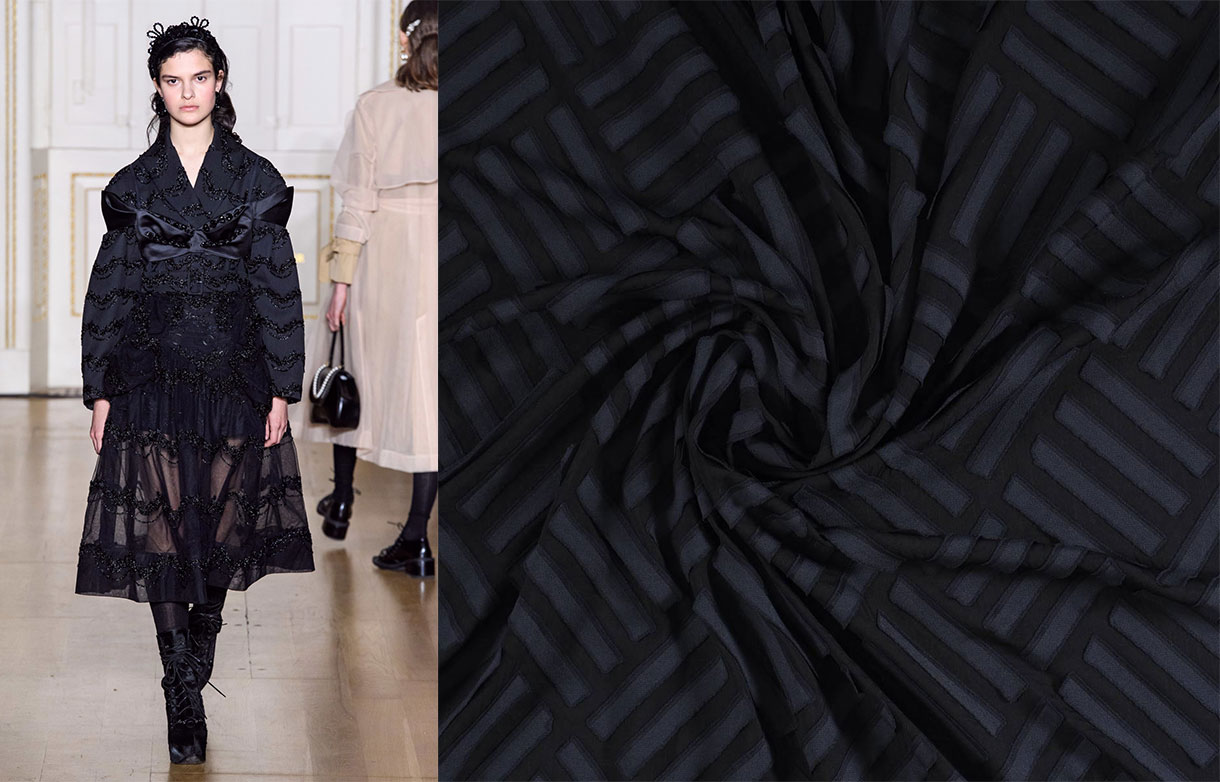Miércoles 16 diciembre 2020

This anomalous 2020 has also upset the calendar of the interesting informative talks by the Color Community. association. A private initiative, which we have followed closely since its creation, led by a group of three professionals who love colour: the architect Pere Ortega; the designer specialized in Colour & Trim, Eva MuÃąoz; and Rosa Pujol, Textile & Colour Stylist and creative director of GratacÃģs.
This year, the biannual and face-to-face meetings at the Old Damm Factory in Barcelona have been converted into digital format, thus via screen respecting the security measures imposed by the current health situation. Despite the difficulties, Colour Community was able to present the new colour chart that will serve as a guide for the Spring-Summer season 2022 in an orientation report that serves as a source of inspiration for creative professionals who are dedicated to fashion, design, advertising or architecture, among other areas.Â
Within a current social and economic context marked by instability and uncertainty, the new broad and global creative proposal WaitâĶ SS22. A concept that articulates the entire chromatic range and which symbolizes the preamble to an infinity of optimistic possibilities, guided by the real need to make better decisions as a society and also in relation to the environment. This “waiting” is essential, according to the association, “to appreciate and value life with humility and simplicity, and its functional daily life to structure the whole future.” For this reason, it will be necessary to design from practicality, but without forgetting beauty or creativity.
âThe new creation symbolizes the preamble to celebration,
play and optimismâ
âWaitâĶâ also symbolizes the beginning of celebration, play and optimism, opening seamlessly to coexistence with digital reality. As for colour, it materializes like never before, conveying human emotions and being the conductive support of these senses.
In turn, the ‘WaitâĶ’ colour scheme is structured through four ranges of colours, textures and materials named WaitâĶ & Listen, WaitâĶ & Wish, WaitâĶ & Enjoy and WaitâĶ & Grow Up. Colour Community sums it up with a claim to a final message of hope: âWaitâĶ & tomorrowâ. Wait and there will be a tomorrow.
Below, we summarize each creative proposal:

WaitâĶ &Listen
This first range is inspired by attentive waiting: ” one that is willing to receive information and learn from it “. A proposal that is based on learning from the proximity of natural society and human knowledge. WaitâĶ &Listen is built from neutrality and naturalness, presenting colour with renewed subtlety. That means that we speak of natural realism, of materials and finishes that connect with a well-manipulated origin, worked from harmony and sustainability. As for the colour palette, relaxing neutral tones abound, such as natural white, basic ecru and calcareous grey, among other soft colours that structure and soothe. The designs mark a return to the simplicity with linear shapes and geometric  basics such as the circle. Rough textures, natural and imperfect finishes, wrinkles and rustic aesthetics return. This trend is also seen in fabrics that are expressed without decorative excesses. Clean-looking matt cotton, linen, hemp, poplin and satin threads abound. Finally, natural fibres coexist with recycled and regenerated synthetics.

WaitâĶ &Wish
The second range appeals to desire, this concept that cannot be materialized and that activates the most creative part of the human being. According to Colour Community: “desire is not satisfied with the tangible and looks for something else as far as possible”. Under this premise, WaitâĶ & Wish seeks to rediscover the secrets of craftsmanship, revaluing all its specific features. In turn this range also focuses on the plant world, but this time it focuses its attention on that nature that we know, but that we rarely touch or experience consciously. The colour is inspired by the apparent chaos of natural beauty, its uniqueness and exuberance with rich, bright and contrasting chromaticism: vegetal green, bright blues, gold foils or crimson brushstrokes. The designs seek to seduce by their elemental, organic and abstract geometries, hand-drawn striped prints, paintings in their freest version and colour combinations that reflect the chromatic chaos of nature. As regards materials there are many works with artisan natural dyes, semi-gloss yarns, die-cuts and laser cuts, utilitarian clothing and satin looks. Finally, in fabrics we are committed to sustainability and comfortable and practical fabrics that do not abandon design. In the fantasy section, Jacquards abound with geometric structures, mesh fabrics, nets and refined weavings such as reliefs and embossing.

WaitâĶ &Enjoy
The third inspiration is the opposite on a conceptual level to the first two: it wants to project the future in an optimistic and creative way, exploring concepts such as freedom, evasion and extroversion. A creative enjoyment that will become limitless, but consistent and thoughtful with the common good. In this range, Colour Community features a creation enriched and loaded with subjective personality, but always coherent and respectful with the environment. The colour palette is based on fresh, cheerful, playful and sensual tones full of positivity and ready to be combined with neutrals. Vital tones such as geranium,  fresh mint, chlorophyll, pink and vitaminised lime which combine with neutrals like white and sand-coloured. The designs are seduced by the power of the flowers and the magnetism of the most exuberant vegetation. Leaves, petals, gardens, green spaces … plant nature also takes centre-stage in summer fabrics. In addition to the flower motifs there are beautiful yarns for new colour sensations, shiny fibres, fluid fabrics that create transparency, textured organza with iridescent yarns, Jacquards with reliefs and piquÃĐ. In general, the fabrics express that intention to celebrate and dance again through movement.

WaitâĶ &Grow Up
Finally, WaitâĶ & Grow Up represents an evolution of the previous range. It is based on the imperfection of growth, the acceptance of the passage of time and integration of the past in order to understand the future. This range is “a reunion with the most chromatic geometry with a high expressionist content”. Products designed from a future perspective, with this range of colours, will be approached with a stimulating and light-filled mentality in which multicoloured harmonies generating multitone patterns will play a prominent role. The colour palette is thus multifaceted, symbolic, versatile and adaptable to all sectors: mauve, yellow, intoxicating pink, coral, orange, green, grey, blue and sophisticated brown. In designs a mixture of antagonistic, strange motifs and visual surprises is prioritized. With regard to fabrics this last range follows the line of the previous three and has a clear intention: to better production via recovered or recycled yarns, reducing the chemical impact and water consumption, in order to face a future with hope. Finally, the proposal is based on tactile fabrics that provide an extroverted, colourful and highly visible look.

Sorry, this entry is only available in European Spanish.
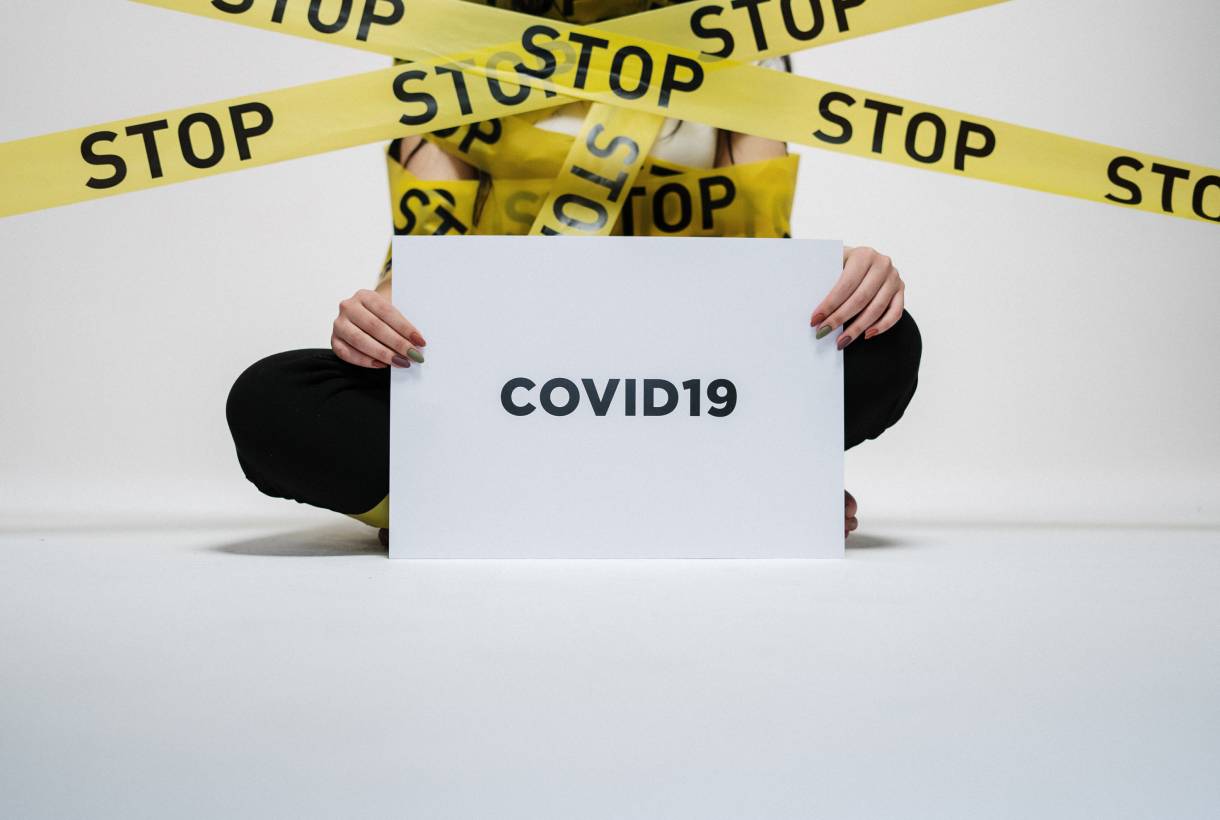
Together we are stronger – and this is more necessary than ever in unstable times that shake the foundations of the current economy. The textile industry (national and international) could not be left out of the emergency caused by the coronavirus, and it is admirable how in recent weeks it has joined efforts to manufacture on a large scale basic medical supplies to help cut the chain of contagion of the disease, and thus slow down the pandemic.
In extraordinary situations shock measures are needed. In our country, Spanish textile companies, as well as cosmetics, automotive and beverage sectors, have heard the government’s call to convert production to make masks, gloves, assisted breathing equipment or disinfectant gels to the maximum speed. This reconversion serves to supply hospitals, residences and essential service workers who urgently need this material to face the battle against the epidemic. Until now lack of resources was one of the black holes that gave wings to the coronavirus.

In the case of the textile industry, the companies that are joining the initiative have gone from sewing pants or dresses to making surgical masks and âuse and throwâ gowns that are used by thousands in hospitals. To date the sector has the necessary machinery, patterns and fabrics ready and once they comply with all the requirements and approvals approved by the Textile Technological Institute (AITEX), mass production will begin. Estimates are indeed encouraging: they calculate that up to 160,000 masks a day and about 50,000 disposable gowns can be manufactured.
The big international fashion brands have also gone to work with special productions accompanied by financial donations dedicated to providing current resources in hospital centres and promoting scientific research to accelerate the race to find the vaccine that eradicates the coronavirus. For their part, the Spanish fashion giants (Inditex, Mango, Tendam and Desigual) also have an army of suppliers around the globe to obtain more medical supplies. Things are already moving in this regard.
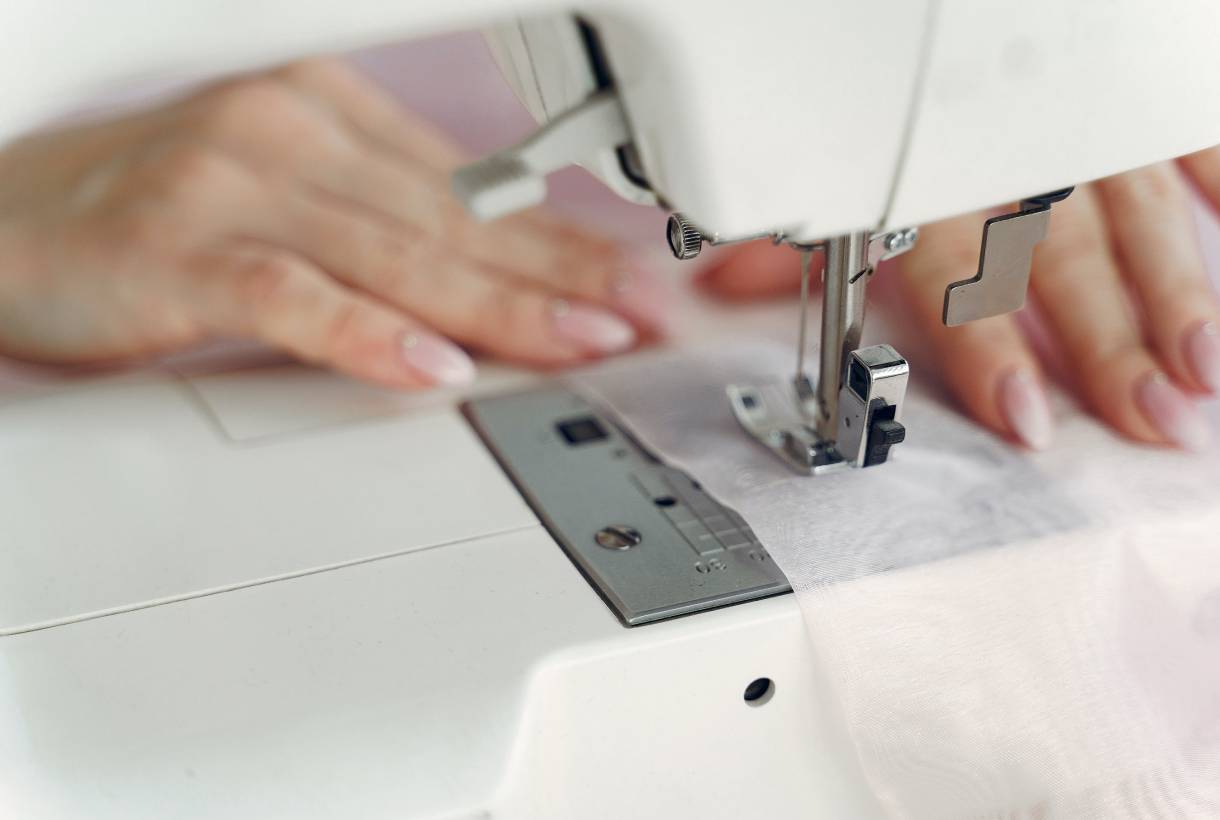
An army of volunteers fights for the cause
Beyond unity, if there is something that is happening in a positive key in almost every corner of the planet and that is teaching us a valuable lesson in humanity these days, it is solidarity. Everyone wants to join in and help as much as possible to slow down the pandemic. Apart from private initiatives, which are many and diverse, one of the projects related to fashion that has contributed its grain of sand has been Modistas Solidarias, an initiative promoted by the designer MarÃa Cordero, alter ego of the Spanish firm Wolflamb. Its goal has been to convert all the cotton fabrics into masks to supply the hospitals near its workshop in Valencia, and for this reason all seamstresses on the team are involved. This small project has gained in strength by the addition of small workshops and individuals spread throughout Spain. Along with anonymous volunteers, well-known names such as Ariadne Artiles, Eugenia Silva, Blanca Padilla, Paz Vega and designers Vicky MartÃn Berrocal and Juan Avellaneda have also joined the initiative.
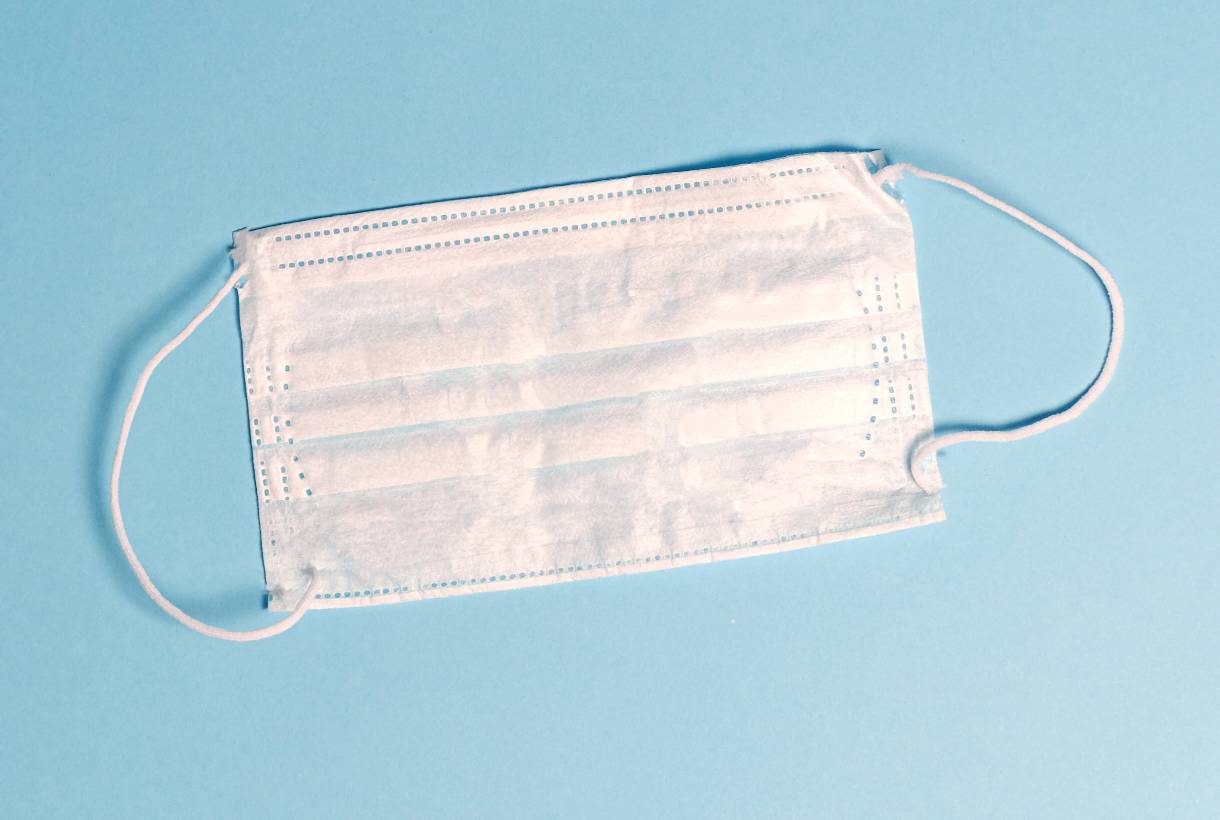
GratacÃģs is also committed
At GratacÃģs we have not stood idly by and we are aware of our social responsibility as a fabric company. We too wanted to join forces in the fight against the coronavirus. So far we have supplied and shipped dozens of cotton fabrics to local workshops and neighbourhood companies for mask manufacturing. We are aware of the state of emergency and in the coming days we shall be studying how to encourage more actions to alleviate this social, economic and health crisis. We will inform you through social networks. Look after yourselves at home!
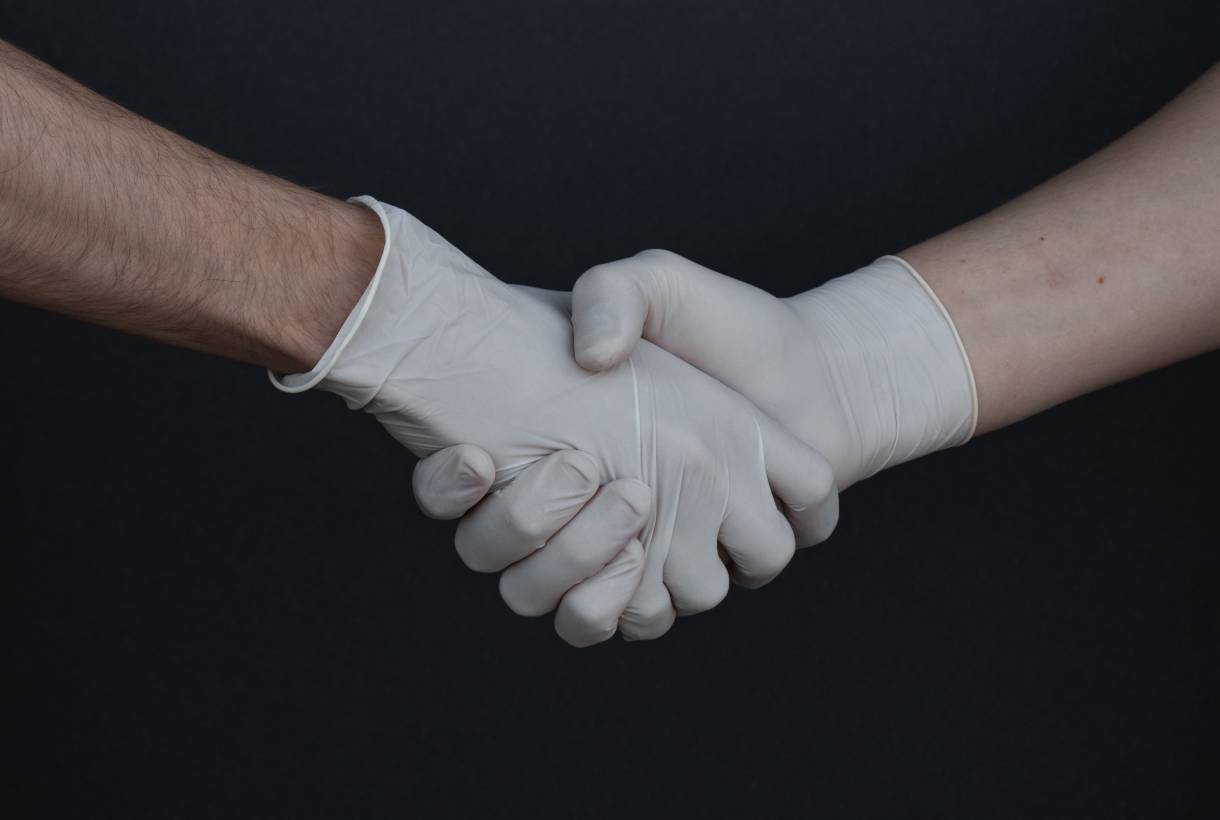
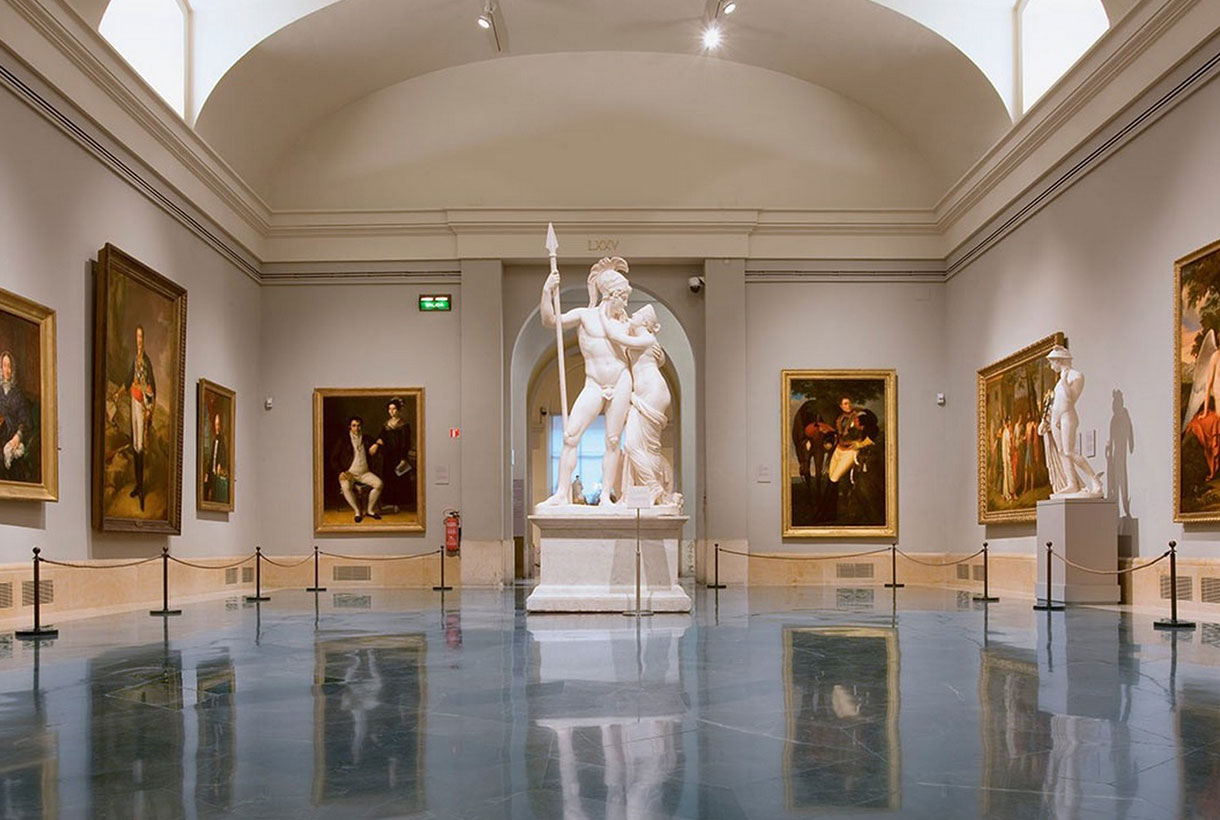
No one denies the obvious. Culture and leisure in its most traditional exhibition formats have been one of the biggest victims of the coronavirus. The closing of movie and concert halls, museums, exhibitions, theatres and libraries, among others, and the subsequent confinement in the home have hampered consumption habits via physical methods. Even so, culture is subversive and in difficult times it has always found alternative ways to spread knowledge through other media. And, in this case, despite the confinement, cultural life continues behind the screen in fully digital terrain.
The virus has not stopped the immense power of culture with its multiple channels of expression that allow it to keep its objectives intact: to spread knowledge, contemplate beauty, stimulate the imagination and create critical opinion. In fact, in the last week confinement has put to the test the ingenuity and creativity of many artists who have devised new proposals to experience culture from the sofa at home. From sporadic festivals to virtual visits, streaming talks or improvised courses. Every day new and original small-format initiatives emerge, in addition to those promoted by the world’s main art centres, to expand the list of cultural activities offered as an alternative to entertain and animate the days when people are shut-in at home.
Here we suggest some ideas for continuing to feed the intellect from home.

Virtual art
Museums and cultural centres around the world are still open virtually. This is the example of the Thyssen, the Prado, the Reina SofÃa or the Museu Nacional dâArt de Catalunya, which offer virtual tours, videos, audios, conferences and even online courses to enjoy the cultural activities of these Spanish cultural venues. Internationally the Uffizi in Florence, the Vatican Muses, the Louvre, the Metropolitan in New York and the National Gallery in Washington stand out, for example, which also show visitors their online collection. For its part, Google,via its app, Arts and Culture, offers virtual reality guided tours of museums, masterpieces and even the construction of the statue of Liberty in New York. In fact, the almighty Google collects more than 7,000 virtual exhibitions from all over the planet. The difficult thing in this case, is to choose the sample to look at. For its part the benchmark for contemporary art, the MOMA, is also offering 6 interesting courses related to fashion, art, photography and design, all for free and without leaving home.
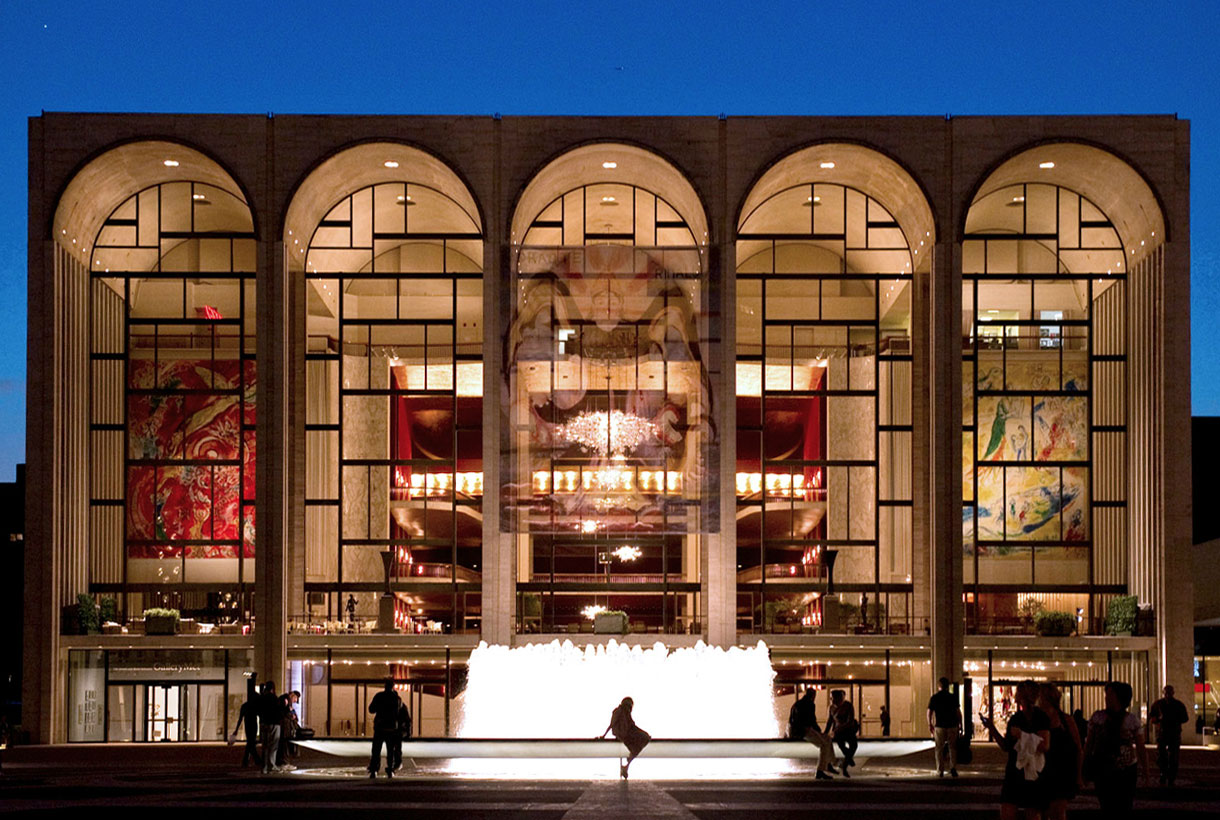
Theatre and performing arts
The performing arts also offer facilities to digital users. The Teatroteca of the Ministry of Culture is available with more than 1,500 plays, circuses and dance with works available to users such as âThe house of Benarda Albaâ, âLife is a dreamâ or âBlood weddingsâ. Anyone can access them through a free online registration through Bibliotecacdt.mcu.es. For its part the New York Metropolitan Opera is offering great classics of the genre in streaming such as âCarmenâ, âLa Bohemeâ, âLa Traviata orâ Il Trovatore â.
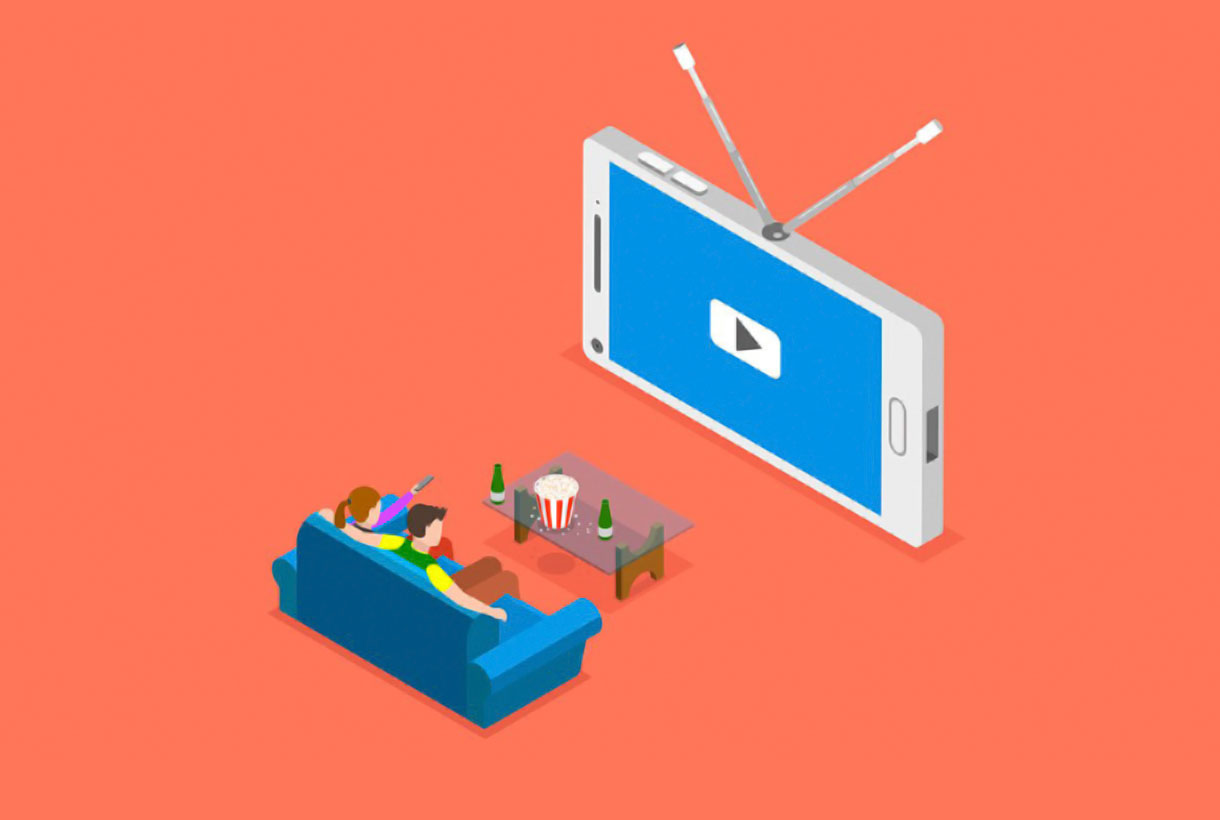
Series and films
Digital payment platforms for viewing audiovisual content have experienced a new boom in subscriptions that show the increasing consumption of series, documentaries and films among confined users. Apart from the kings of streaming, there are also other public websites such as RTVE or TelevisiÃģ de Catalunya that offer series and movies for free and legally. Other pages such as Efilm.online and Ebiblio.es have a catalogue of free movies, books and magazines for those who have a library card. Libraries, such as Nacional or Catalunya, and websites such as Google Books also offer free reading.
Live music
Music knows no borders. And less in difficult times, where it shows the great ability to break barriers and reach all corners and audiences. Initiatives of all kinds have emerged from social isolation: from sporadic concerts through Instagram grouped in hashtags that are running like wildfire on the Internet such as #YoMeQuedoenCasa to alternative music festivals such as the Quarantine Fest to make the state of confinement more bearable. This latest initiative brings together 50 bands that offer private concerts from their homes through YouTube. Some anonymous artists have even come out onto their balconies to perform songs a cappella, or with their musical instruments, to offer impromptu live concerts to their neighbours.
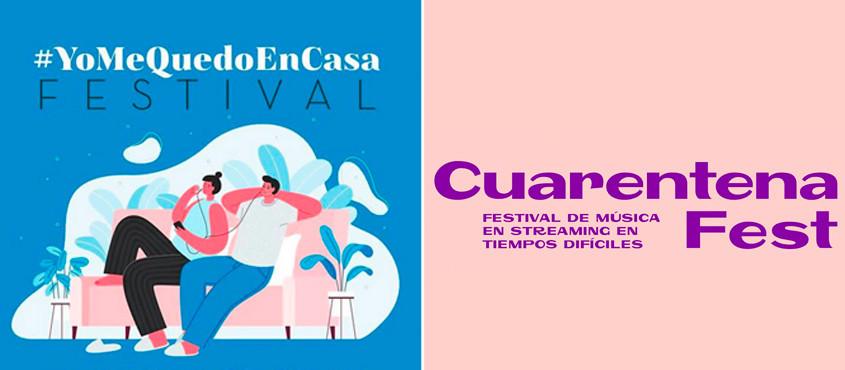
In the coming days, the cultural offer will increase to maintain a certain normality from home. Evidently the consumption format changes because coronavirus has reduced the aesthetic experience to the window of a screen. Also missed is that essential social component that sustains culture: to climb on a stage, to comment on some works that excite,to walk through an exhibitionâĶ but we are sure that when this situation is over we will perceive (and appreciate) beauty in another way and from all possible areas. One last tip: keep your wifi well-connected!

March, like September, is the month of rebirth. From the blooming of the new season that hitherto has been hibernating in our stores, waiting for its turn: the official presentation to society. And we really wanted to show the new collection of fabrics, this time absorbed under the Double Poetry concept.
Double Poetry appeals to poetry that hides duality. A dual year (2020) inspires a spring-summer collection that moves between two waters. On a creative level we are inspired by the antagonisms that are related to each other, especially in work processes: the mental and the irrational, technology and emotion, what develops in a cerebral way and what is guided from the heart. We provide the most advanced technology with poetry and human emotion to create a rational and tangible proposal, but with high doses of sensitivity.
Under this concept of extremes that complement each other, the Spring-Summer 2020 proposal is developed in two directions:

1. A turn to contemporary classics
The classic does not have to be predictable or boring, especially when it undergoes a transformation that shakes and rejuvenates it. We like to get out of our comfort zone with disruptive proposals. This line contemplates fabrics that retain a certain timeless primitivism. They are easily recognizable products, close to the domestic and that convey security and everyday life: wear a Jacquard out of the festive season or look for a type of cotton that conveys a message, why not? A range of traditional fabrics (drapery, tweeds and wool items are coming back), some of them rustic looking and which interact with the latest technologies to include us in contemporary fashion.
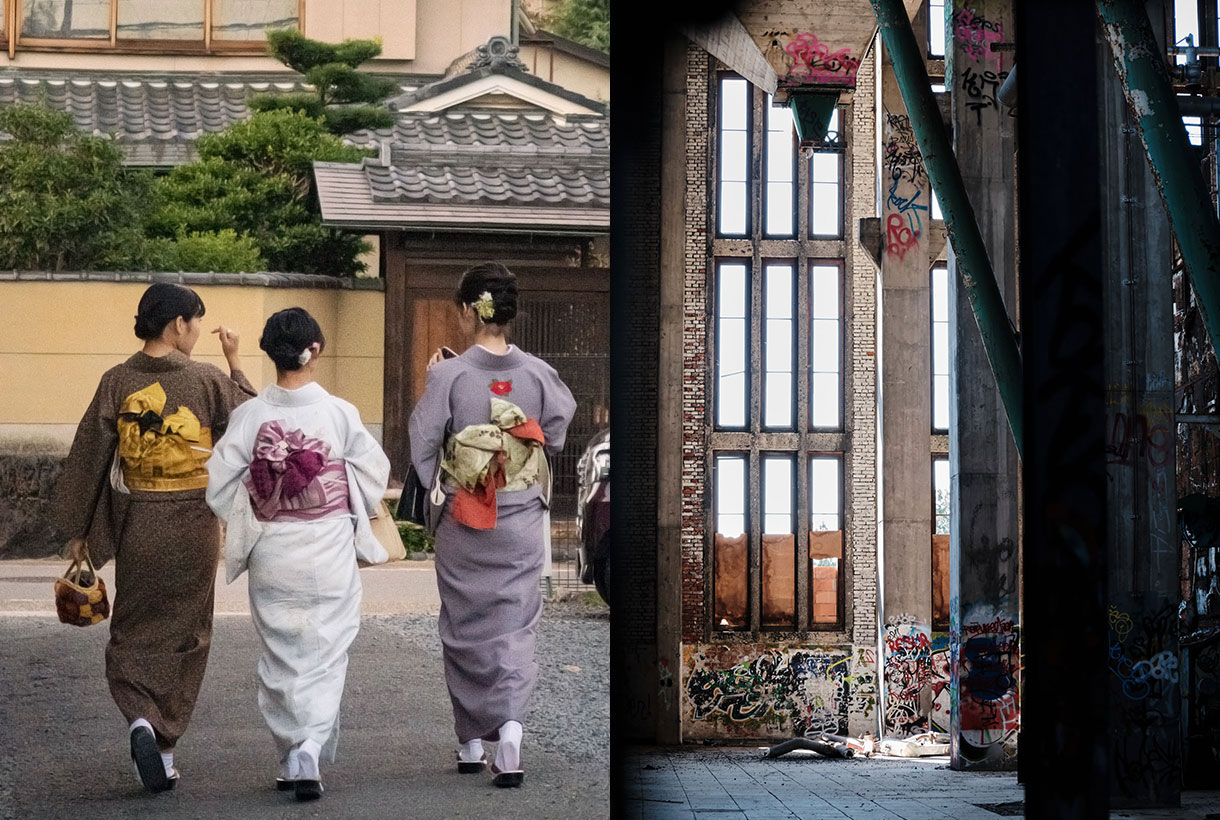
Within this line the tactile fabrics are grouped, with certain reliefs: granulated, obvious crepes, flamed, flexible volumes, synthetic glitters, silver lurex worked in a delicate way and without stridencies. These products stand out because they seek to enhance the beauty of the raw material. They are handmade and rustic fabrics, but at the same time technologically sophisticated and they show these imperfections (reliefs and volumes) with pride. In terms of design, contemporary classics are inspired by the ethnic universe in a minimalist key: in a natural folk style with firm strokes, sinuous and organic shapes. This category also abounds with repetitive, almost elementary geometries, with or without symmetry: clean frames and essential stripe patterns. Finally we are not forgetting floral prints with delicious compositions with petals and motifs that are inspired by the surfing universe of vibrant colours.
In this first block neutral tones abound, an earth palette with golden nuances, the unbeatable black and white or navy blue combinables.

2. An ode to the urban landscape
The second address of the Spring-Summer 20 collection puts us in an urban environment. The city as the core of human relations. We seek that direct connection with our glass and concrete home and within this line we embrace experimentation with surprising combinations of materials and textures with vital, luminous and energetic colours that can be confronted face to face to create an interesting dialogue in tune with the urban landscape.

In this second block fabrics of a young and fresh luminosity abound, with intelligent and emotional shades at the same time. We seek to appeal to the emotions with this mix and we let ourselves get carried away by intuition. Thus the fabrics we are suggesting stand out for their evidenced volumes, they are dense in appearance, with artificial compositions and elegant textures for a seduction that enters daytime terrain. Feminine and fluid fabrics with light and fresh reliefs because we want to communicate energy and spontaneity through the materials. In turn the products have a clean appearance, technical touches only in finishes and they have a spontaneous and energetic design for a look that stands out within the city. The fabrics seek some theatricality and joy with giant graphics for the outdoors, aquatic reflections and botanical-inspired prints. A line that encourages us to rethink aesthetic codes and experiment without questioning the beauty or the need for the final products.
In this second block mineral colours abound ranging from blue to pale pink or lavenders, oranges and a palette of greens and limes. Vibrant tones that are exhibited for their own sake.
We invite you to discover the new Spring-Summer 2020 collection through the online store or in our GratacÃģs space in Barcelona. Let yourself be seduced by the materials, textures and patterns of the fabrics!




And after Madrid it was the turn of the fashion week in Barcelona with the new edition of 080 Barcelona Fashion held, as usual, in the Modernist Venue of Sant Pau. This year the Catalan catwalk did not have as many designers or brands as previous editions, but the initiative covered these local absences by reaffirming its commitment to international companies and the inclusion of new exhibition formats of the collections that adapt to the needs of the smallest of small designers. Once again at GratacÃģs we are following some fashion shows of designers who rely on our fabrics to come up with their proposals for the next Autumn-Winter season. These were the most hunted looks! Â
Eiko Ai
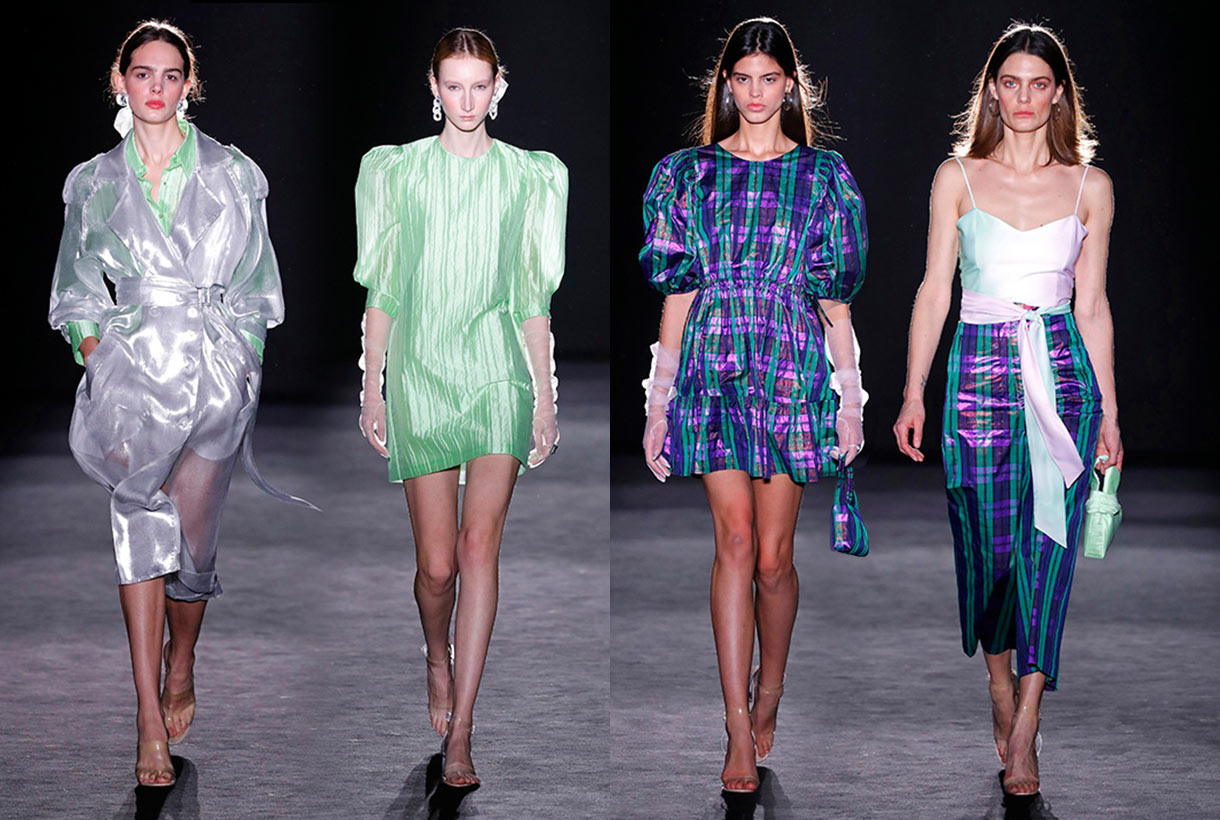
This young Barcelona firm debuted on the Catalan catwalk with ‘Quantum One’, a collection inspired by quantum energy and the unity of the cosmos that represents an evolution of its previous proposal. It was a feminine creation with a galactic theme, where several GratacÃģs fabrics were on display in a range of textures and transparencies: organza, flocking, jacquards, metallic finishes, sequins, technical fabrics, steams, satins and crepes combined with floral and geometric-inspired drawings with a print that precisely evokes those magical worlds.Â

The stars and flashes of the Milky Way influenced the colour palette with shades full of light, artificial colours, lilacs, mints and off-white looks. From out of the immense darkness of space emerge jet black and midnight blue. And from the planets and cosmic materials come the reds, nudes and deep pinks.
En su conjunto, Eiko Ai designed a whole collection inspired by a daring and feminine woman with delicate designer clothes and a contemporary spirit which stand out for their artisanal creativity as well as for the quality of materials and local production.
MenchÃĐn Tomà s

The sophisticated note of the latest editions of 080 is added by MenchÃĐn Tomà s. This time Olga MenchÃĐn was inspired by the busy night-life of Manhattan in the 70s, just at that time of sunset, when lawyers, brokers and office workers have left the streets and when with nightfall other characters appear on the scene, from diverse classes, cultures and origins such as millionaires, the homeless, artists, DJs, pimps and prostitutes … A mixture of disco, decay, drugs, the gay scene, the mythical Studio 54…

To shape this amalgam of people and nocturnal inspirations, MenchÃĐn Tomà s came up with a creation full of flared trousers, sleek jackets, billowing short dresses, oriental-inspired pieces, never-ending collars, embroidery, bias and lace finishes. They highlighted fabrics that radiate light, others hand-produced and embroidered, together with unique prints.

The colour palette used was intense and contrasted with impossible mixtures of great visual impact: pistachio green with fuchsia, pink with purples, glitters, sequins, and, of course, black and white.

Juanjo VillalbaÂ
Juanjo Villalba BermÚdez opened the last day of 080 dedicated to capsule collections presented in more free and open formats than in traditional parades, with more scope for the creativity of each designer via presentations that resemble artistic performances. This designer took advantage of his participation in the Catalan catwalk to present his personal project: ‘Emotional mythology’ through 12 looks which at first sight seem unrelated but whose detail maintains their essence. Each look represented a love story told through the costumes and where each model represented a divinity. At the end of the parade attendees could view the collection from close-up and touch the garments directly.
Emotional Mythology was Villalba’s letter of introduction as a designer -before that he was working in fashion marketing- and it was a throw of the dice which opened up new professional opportunities in the fashion industry.
Miércoles 05 febrero 2020
Sorry, this entry is only available in European Spanish.

If anything has defined us since our beginnings, it is our firm commitment to the windows that decorate the shop we have in Barcelona. We are aware that they are our cover letter, the first visual point of attraction and “conquest” of the customer and represent a unique opportunity for designers’ creativity to flow hand in hand with our seasonal fabrics, creating dreamlike scenarios. Faced with this expectation, who can resist letting the imaginative madness of current fashion designers flow? Moreover, we like them to experiment, surprise and captivate us at first sight. An innovative staging of GratacÃģs fabrics in combinations that exceed our expectations. Moreover, the more disruptive the shop-front is, the better!
In 2019 we had the support of several artists who left their mark via our shop windows and to close last year, we want to recall them with a small tribute. Do you have any favourite? What did you like most? We review the most prominent:

February 2019. Rainy weather
Rain was the main feature of the most ephemeral month of the calendar in a work signed by Antonio Iglesias.The Barcelona interior designer wrapped the mannequin in a delicate plumeti tulle in pale pink to give it a fragile and nostalgic hue, in contrast to the black umbrellas with polka dot pattern that accompanied the model. A colour contrast with the same common denominator: patchwork.

March 2019. The floral awakening
The beginning of spring marked the theme of a floral showcase that coincided with the presentation of the new fabric season. Antonio Iglesias captured the essence of all this renovation via a shop window in pink tones in which a tulle curtain with inserted petals surrounding the mannequin stood out, dressed in one of the most successful floral crepes from the last collection.

April 2019. Bridal Moulage
April is the month of brides and at GratacÃģs we reserved this shop-front for one of the winners of the moulage competition among IED Barcelona wedding dress design graduates. A unique opportunity to publicize the work of the new generations in bridal design. In this case it was the student Katia Combatti who developed a spectacular wedding dress with large volumes on the sleeves, following the steps of this unique cutting and sewing technique.

May 2019. Fashion illustrated
When fashion dialogues with other disciplines such as illustration, you can find creatives as fascinating as the one that Joel MiÃąana prepared in order to showcase the month of flowers. The renowned Catalan illustrator, capable of capturing the essence of fashion moments that escape photography, showed how he wanted the mannequin to be dressed: with textured fabrics contrasted in greenish tones and modern complements. Just take a look at the results!

June 2019. Brain & Beast Essence
Ãngel Vilda, designer and most visible face of Brain&Beast transformed the GratacÃģs shop-front into one of his creative illusions, marked by the criticism and dualities that his rebellious streak loves to play with. There was no lack of elements of popular culture, contrasting colours and a luxury of detail that is part of the unique Brain & Beast universe. Anyone who is familiar with them knows full well what to expect…
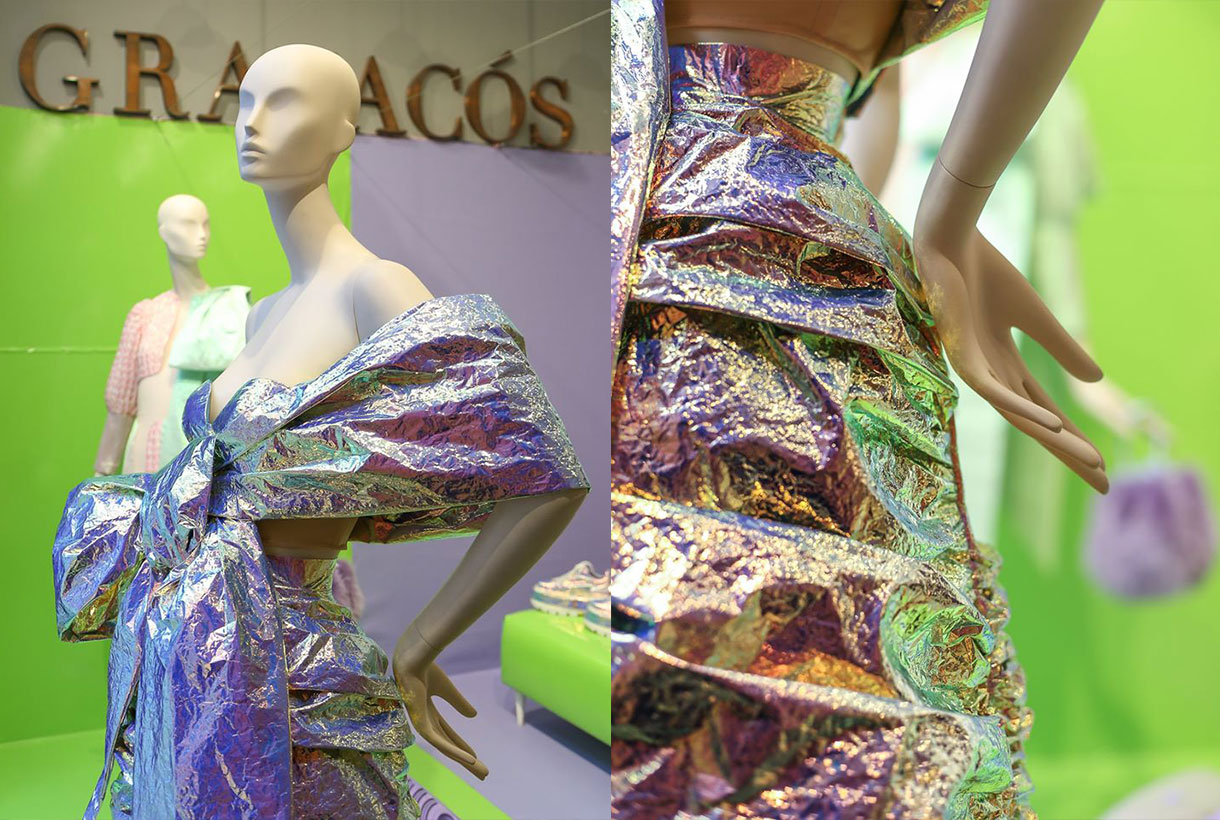
September 2019. The Dominican Harajuku Kids
2019 has been the year of take-off for Dominnico. Apart from his collaborations with Rosalia, the young designer from Alicante, in July he won the Mercedes-Benz Fashion Talent award from among the young companies that parade in the EGO of Cibeles. The award-winning ‘Harajuku Kids’ collection, inspired by the histrionic urban tribes of Japan, was made with some of the most special fabrics from the last spring collection. The shop-window reproduced some of the key looks of this surprising creation.

November 2019. Youth Eclecticism
At GratacÃģs we like to give an opportunity to new talent. That is why our shop-front is also sometimes an experimental support where it is the young talents who set their own limits. Design students from the Institut Català de la Moda (ICM) created an eclectic showcase of some of their most identifying outfits with amazing fabrics from the current autumn-winter 2019/2020 collection. A creation that was both fresh and eclectic.
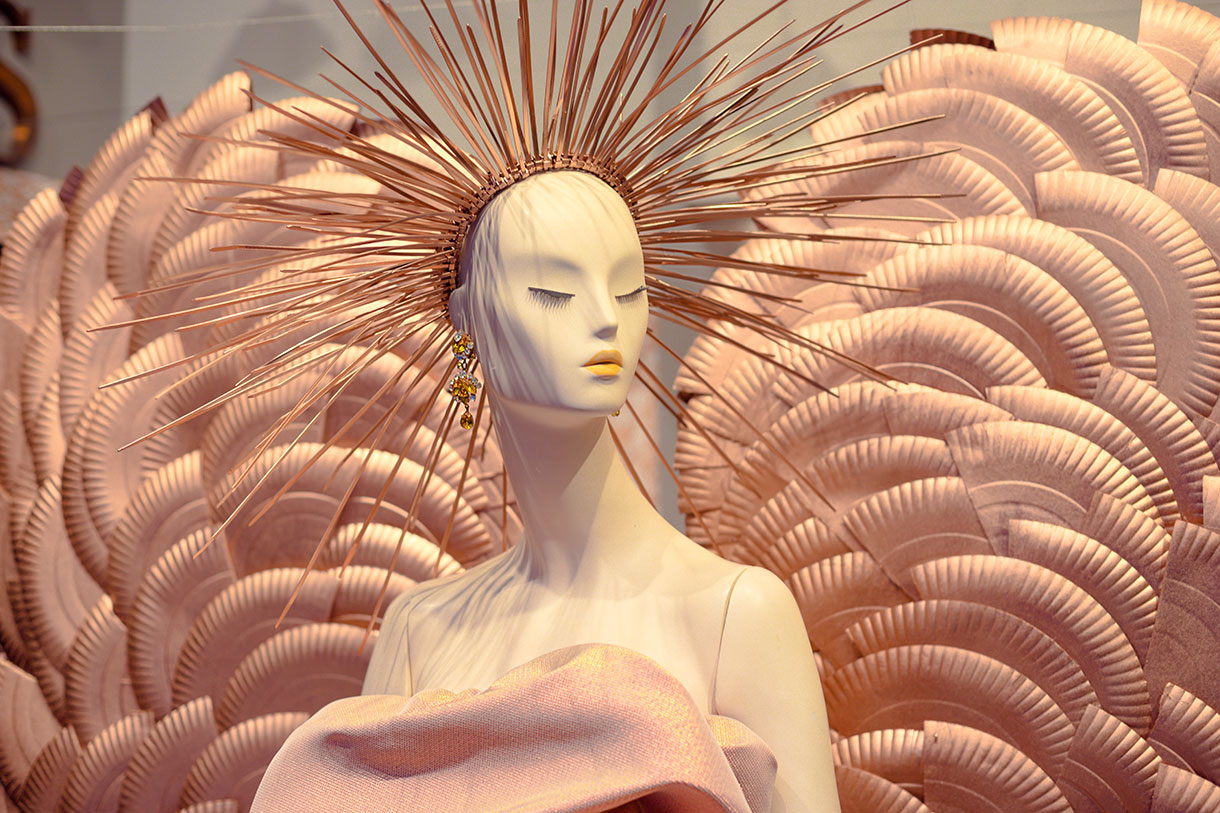
December 2019. The dazzling angel
The last showcase of the year was sublime, starring a look inspired by the strength and goodness of an angel to express the most glamorous and sophisticated femininity, coinciding as it did with the Christmas festivities. It was conceived by the students of IED Barcelona who created an impressive feminine look in pink tones that empowered and attracted all eyes. An unforgettable showcase!

And the time has come! The time of the party and debauchery. Ornate garments and fabrics with sparkles that shine with their own light for daily celebrations accompanied by long nights that demand a more lavish dress code, where creativity and fantasy work at the service of sophistication. Those festive looks that bring out the best version of oneself because it is already known that the most shining âmeâ lives at Christmas. An era that us at GratacÃģs especially like for all its cultural and religious symbolism.
At this time of celebrations we want to show you the most fantasy collection of winter. That where gold and silver are the protagonists of the most sumptuous fabrics that gain in compositional richness, touch and volume. Also it is time to approach other products that explore the fantastical side of fashion through sequins, rhinestones, embroidery and metallic threads, among others.
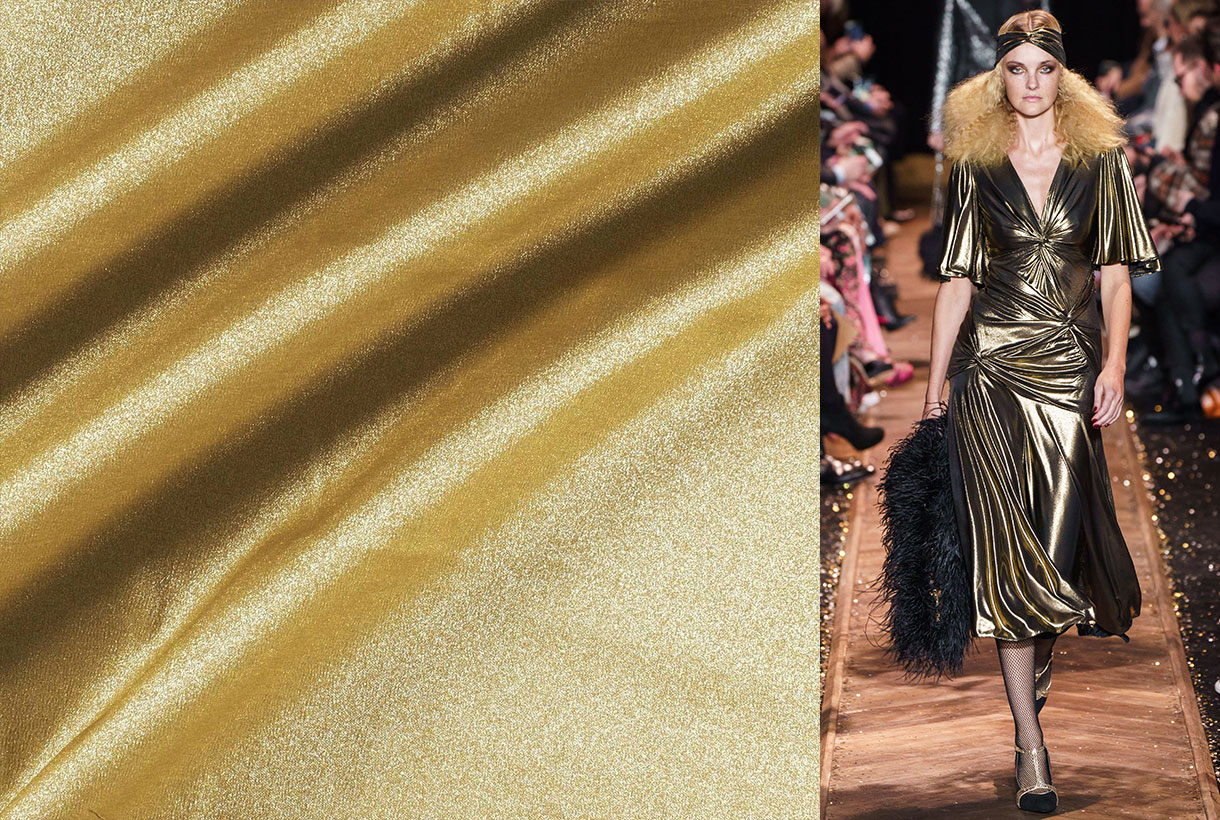
Gold
Did you know that the gold colour is neither the most loved nor the most hated? And yet it is a tone that has double standards in terms of meaning. In its splendorous side, gold is associated with beauty, triumph, wealth and happiness. It is a symbol of courage and power. On its dark side, this precious metal also has strong links with materialism, vanity and even arrogance. The treasures are golden or the majestic palace of Versailles surrenders to gold, which is associated with luxury in its maximum opulence. In terms of fabrics, we pay homage to gold through pleats, sequins, embroidery and lamÃĐs, which create soft golden layers in more colourful or muted tones.
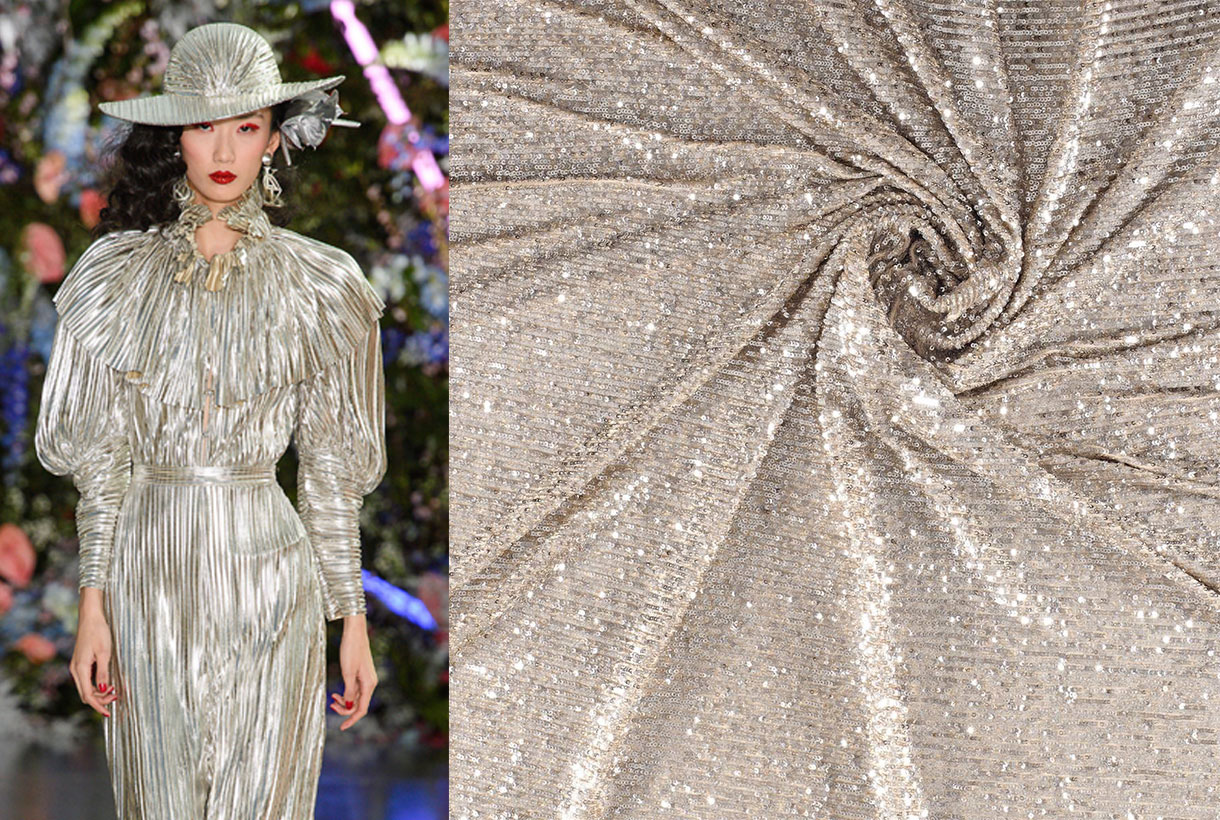
Silver
Silver is the colour that comes from the metal that gives it its name, silver. The first associations to this fashionable tone have to do with wealth, money or success, but also with coldness, greed or arrogance. Like its golden brother, it has an antagonistic connotation. Looking at the positive side of colour, silver is a tone also linked to luxury and partying that is associated with innovation, the future, movement and progress. It is not in vain that silver will dress future trends, avant-garde architecture, technological mechanisms or the most innovative developments. In fabrics, we highlight the inexhaustible sequins that are so successful during the festive season and the metallic sparkles of lame. Also some space-themed fantasy fabric.
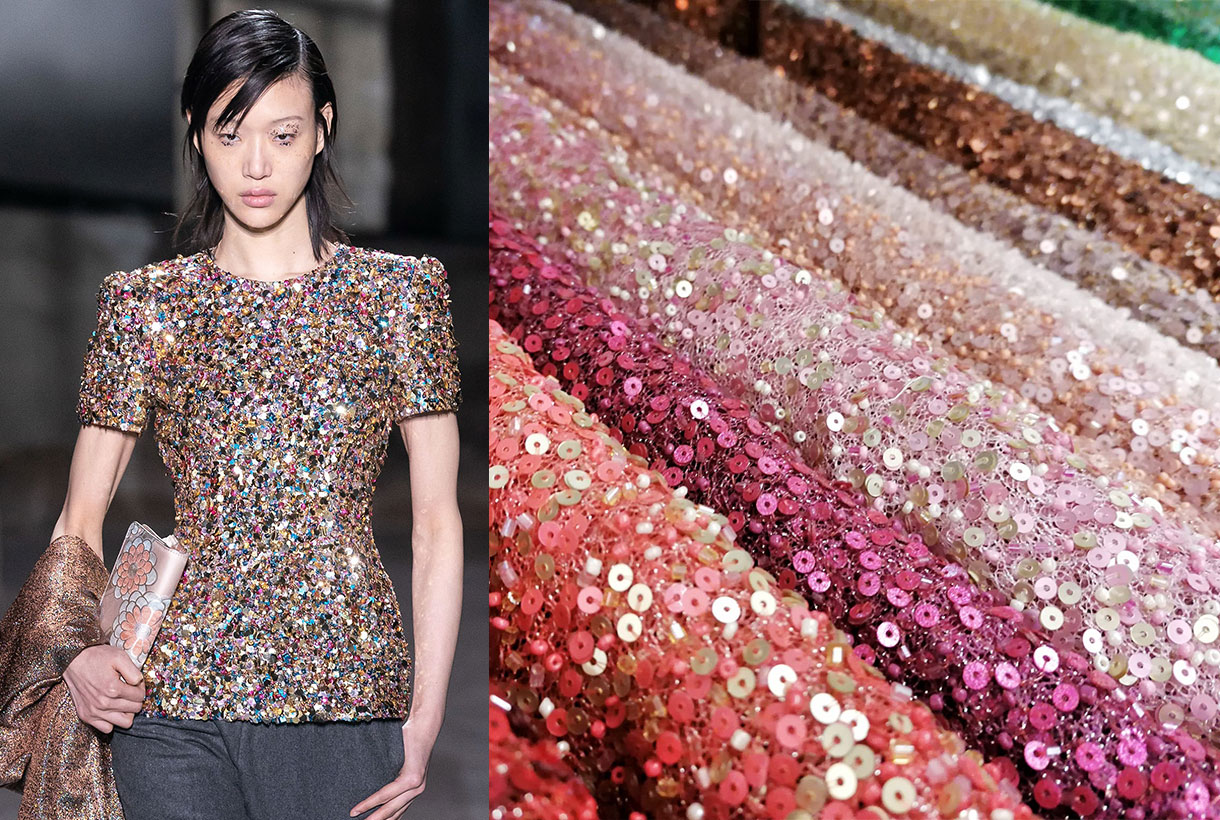
Long life to colour
Not all the colour palette linked to partying has to do with metallic tones and the important thing is to choose fabrics that attract light through their fascinating sparkles. This season the games consists in the variety, the key lies in the brightness of the fabric. Thus, in our space the attractive emerald greens coexist, with the femininity of the powdered pinks, the enigmatic mauve and violet and the bet that never fails: the red classic in all its versions. From the vibrant crimson to the elegant maroon. Which one fits you the most?
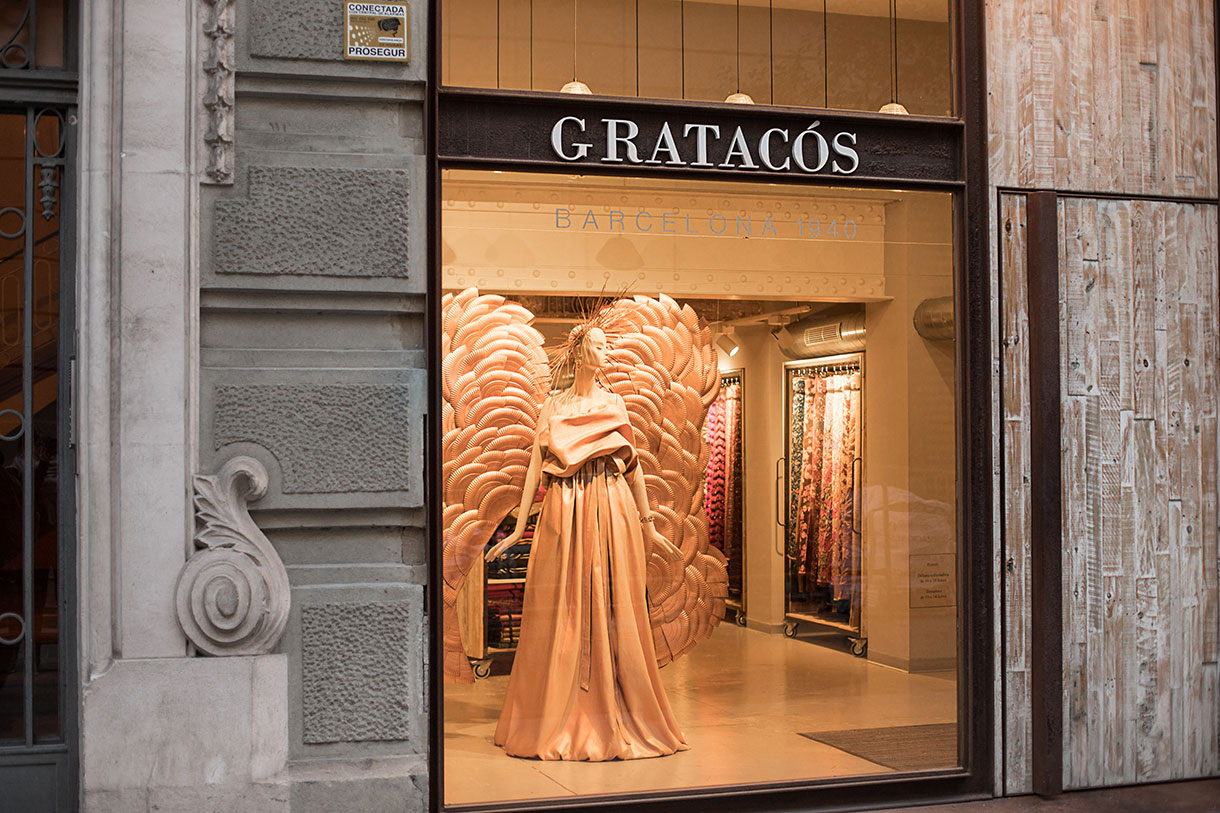
Beyond our suggestions, we also invite you to enter our space in Barcelona to see the latest novelties and we want to surprise you with our new showcase of festive themes that IED Barcelona students have devised for these very special dates. The heavenly inspiration with an angel as main theme serves as a context to express the most glamorous femininity in a bewitching look in pink tones, which empowers and attracts all eyes. Happy Holidays to all!
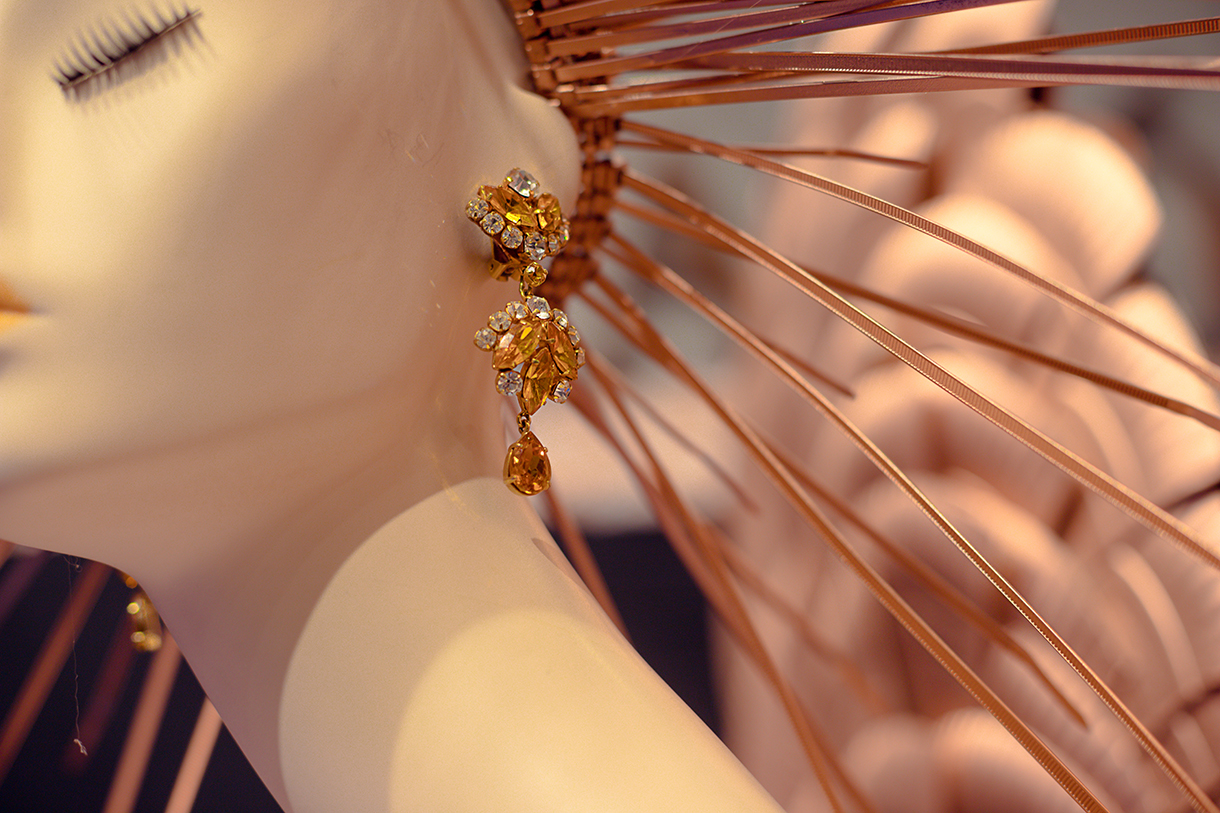
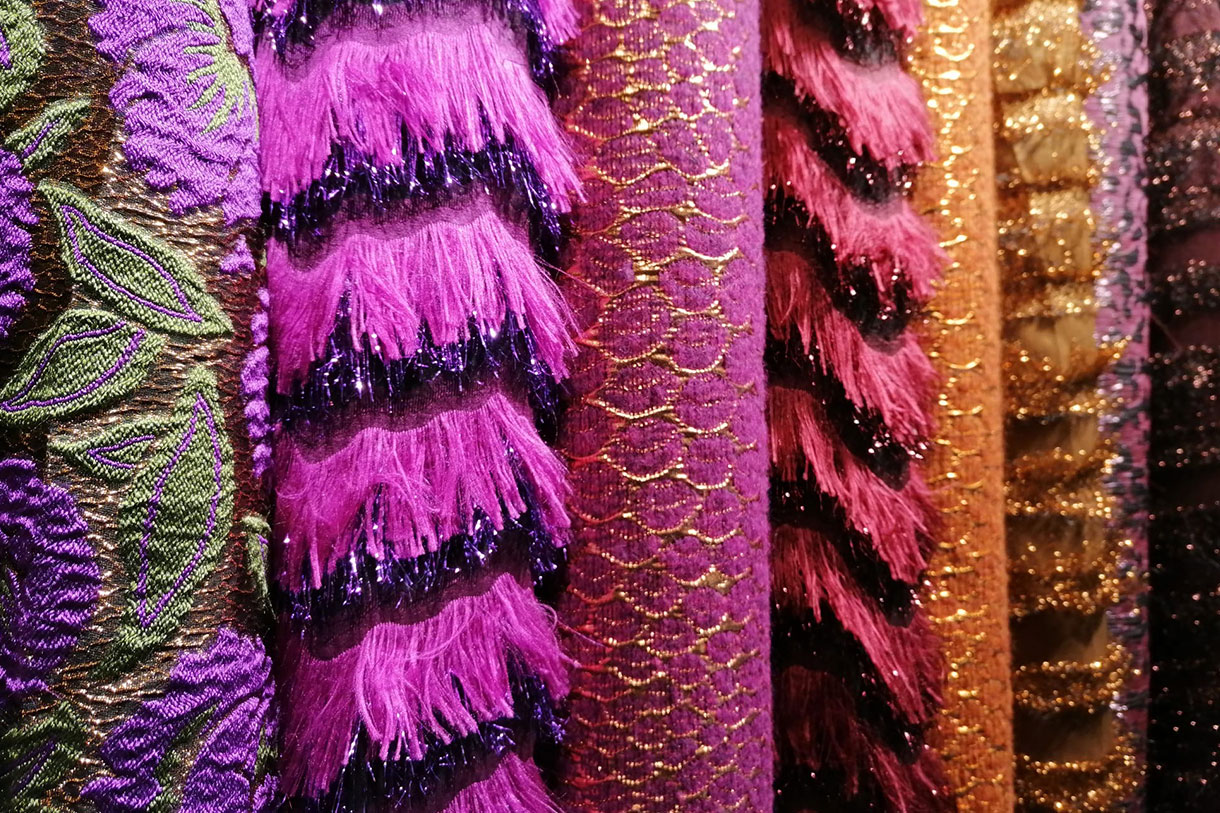
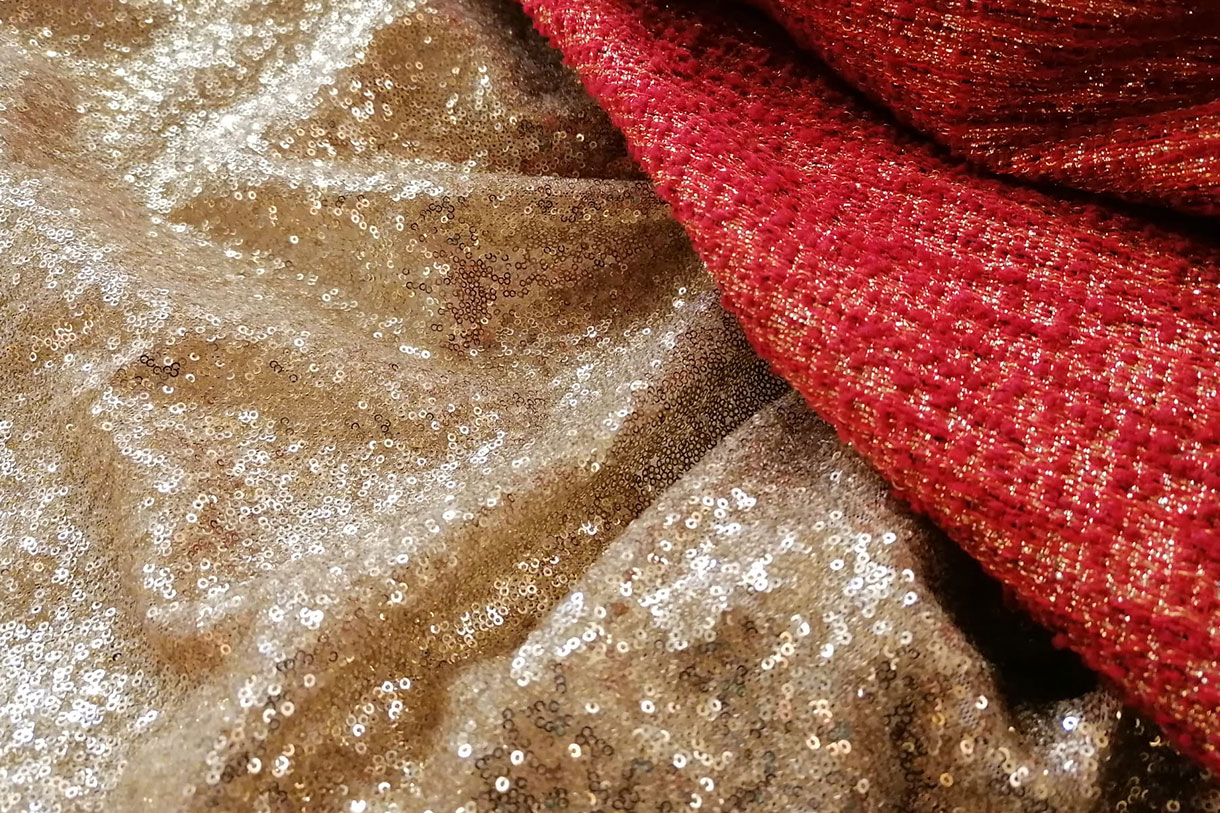
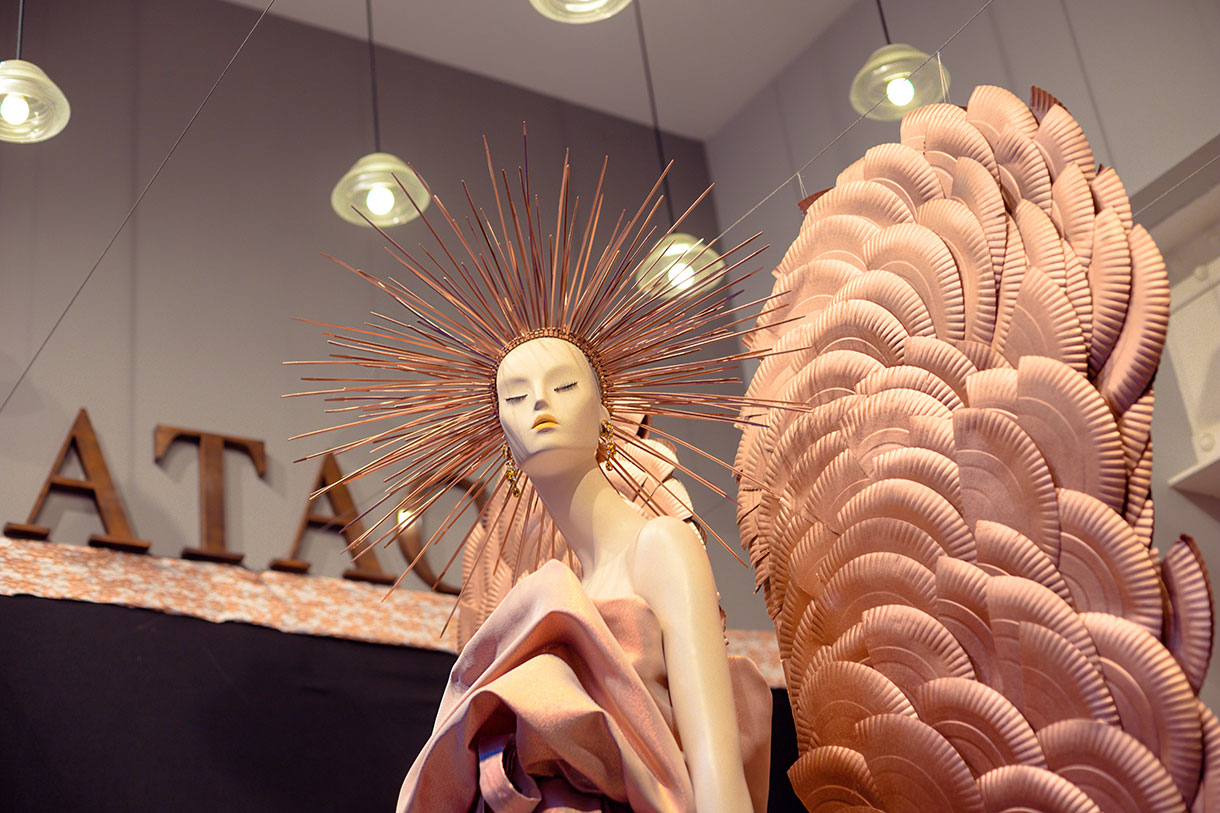

They call it the new black for its versatility and functionality, appealing elegance with discretion. Navy blue was never a risky tone, nor did it pretend to be because it is precisely through harmony, balance and timelessness that it seduces, which makes it a safe bet inside the wardrobe, one which goes beyond the cycles and fashions dictated by the sector. And it is already well-known that the classic never dies. For this reason the colour in question borders on immortality.
Here are some curiosities about enigmatic navy blue:
The origin of navy blue
Navy blue owes its name to the dark blue that was used in the uniforms of several navies. The first to adopt this shade was the British Royal Navy in 1748 and subsequently it was extended to most of the world's navies. In fact it offered the advantage that being almost black the loss of colour was avoided. Thus during the 18th century it was used as a base to dye uniforms.
During the 19th century the use of navy blue extended to other professions and quickly conquered the street. Then the colour black continued to maintain dominance in clothing which was considered serious. However, dyers used Prussian blue and indigo pigments to launch the fashion of navy blue fabrics and dresses, which became a social phenomenon. Navy blue maintained the sobriety of black, but it proved to be less hard and above all cheaper. In fact the colour of the clothing was generally not a matter of taste, but rather of money. After World War I this dark hue displaced black in many professions such as sailors, military, gendarmes, fire-brigade, police or civil servants.

Dior adopts it as a feminist symbol
“Among all colours navy blue is the only one that can compete with black, by presenting the same virtues.” This phrase by Christian Dior has also guided the last stage of the French maison led by Maria Grazia Chiuri, the first woman to lead the creative direction since 2017. Navy blue was Chiuri’s second collection for Dior, rebelliously picking up the heritage of the French designer with creations brimmed with items never seen on the catwalk such as jeans or a black leather beret as a star accessory.
Thus evening dresses, with transparencies and brightness, alternated with other looks for trouserss and workers’ overalls, as if they were factory uniforms combined with printed handbags. Navy blue represents equality and uniformity for Chiuri. There is no distinction of classes or genders. “The worker’s look is a way of saying that we have to work towards equal opportunities,” she argued at the time. Since then this colour has become a common resource in Dior collections that in lesser or greater proportion have adopted navy blue.

The most classic blue will also be the colour of 2020
2020 will also be dyed in blue. The justify Institute, a world reference in chromatic themes, has chosen the Classic Blue 19-4052 as the colour that will influence next year in such creative sectors as design, fashion or advertising. According to the institution it is a âlasting blue shade for our times, elegant in its simplicityâ. It suggests the sky at sunset and its calming qualities, such as the promise of protection, âsaid Laurie Pressman, vice president of the Pantone Colour Institute.Â
According to the institution Classic Blue tends to surge at convulsive moments of change and this tonality evokes the desire to consolidate reliable and stable foundations on which we can build. In this sense, it offers us a refuge: âWe live in an era that demands trust and faith, and this type of blue offers a solid and reliable feeling that encourages us to broaden our thinking and challenges us to see things in depth,â explains Leatrice Eiseman, the executive director of Pantone.
The Pantone colour of the year is chosen by the directors of the company and about 40 experts from around the world, who take into account factors such as the economic situation, films and popular songs or social issues, among other variables. Thus Classic Blue is taking over from Living Coral, the colour of 2019.

